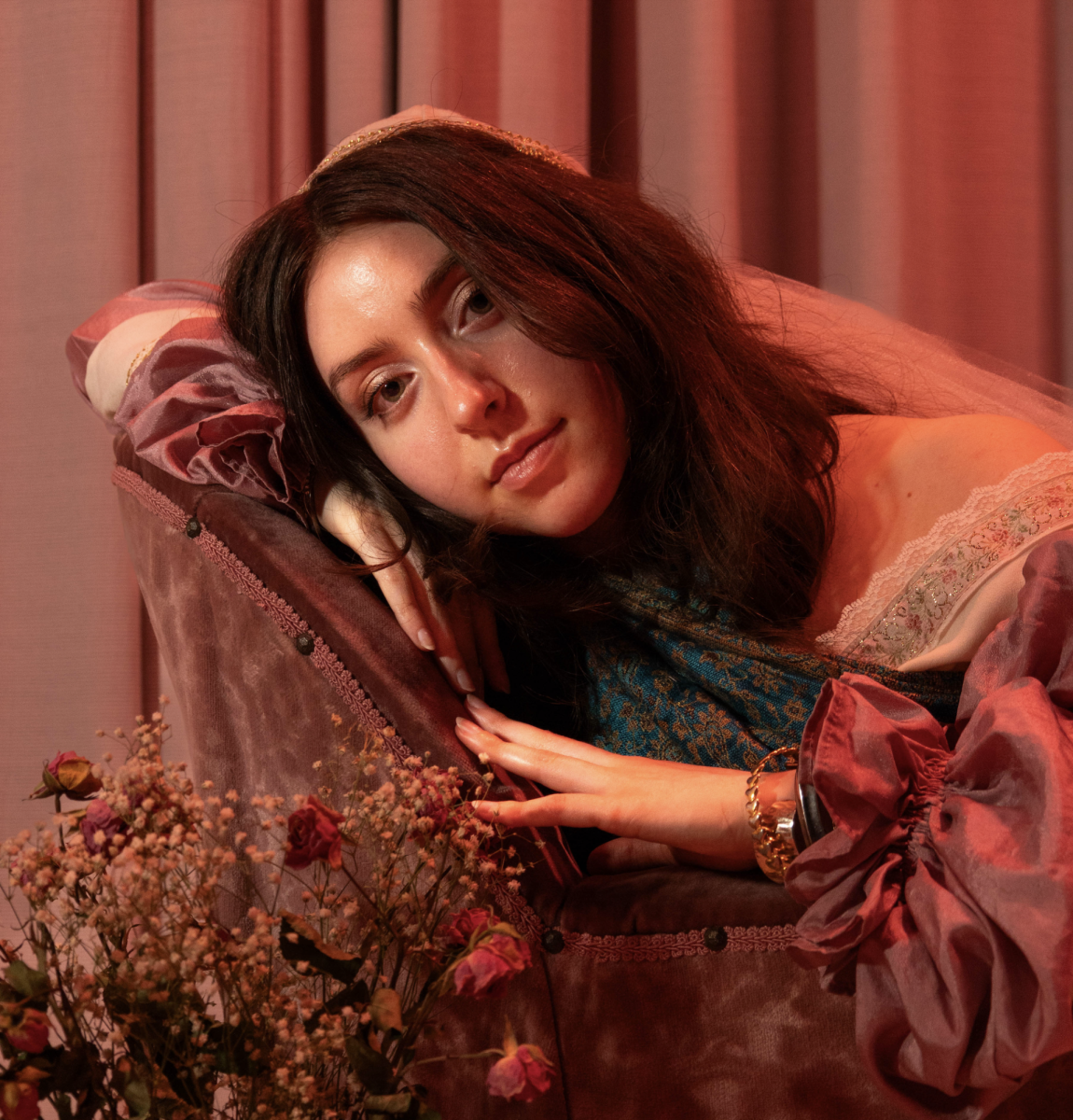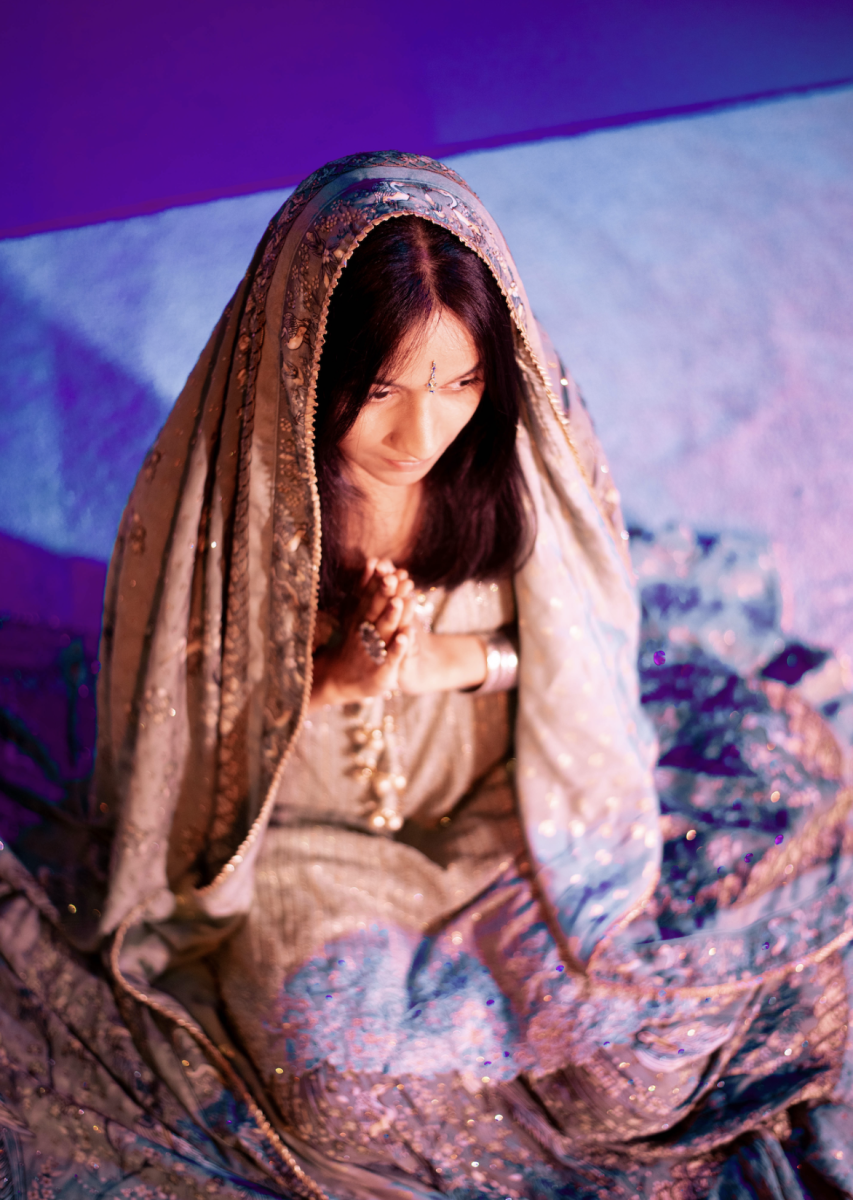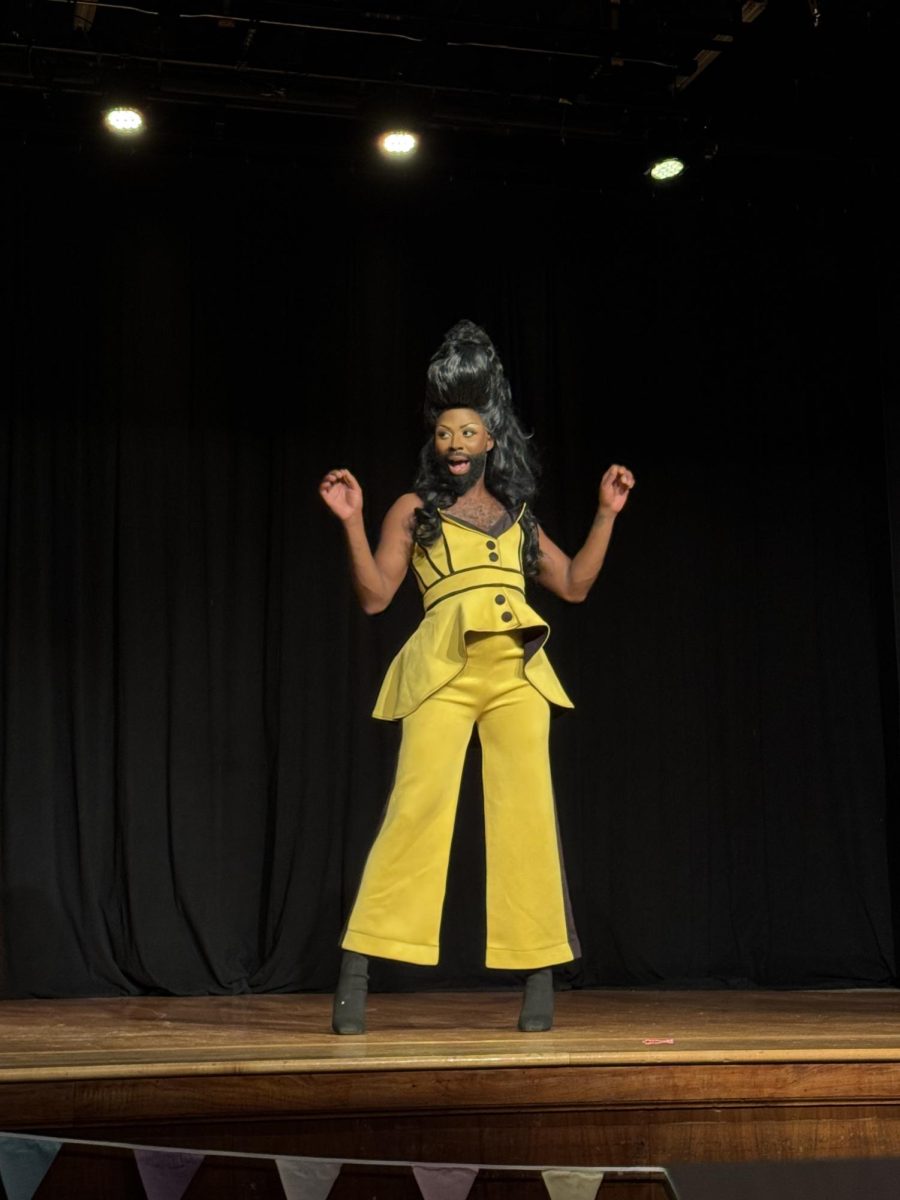This Halloween, product and merchandising management student Madison Koellermeier has curated four historical mourning dresses in a collection titled “Death Becomes Her,” now on display in the College of Business dean’s office on the fourth floor of Austin Hall.
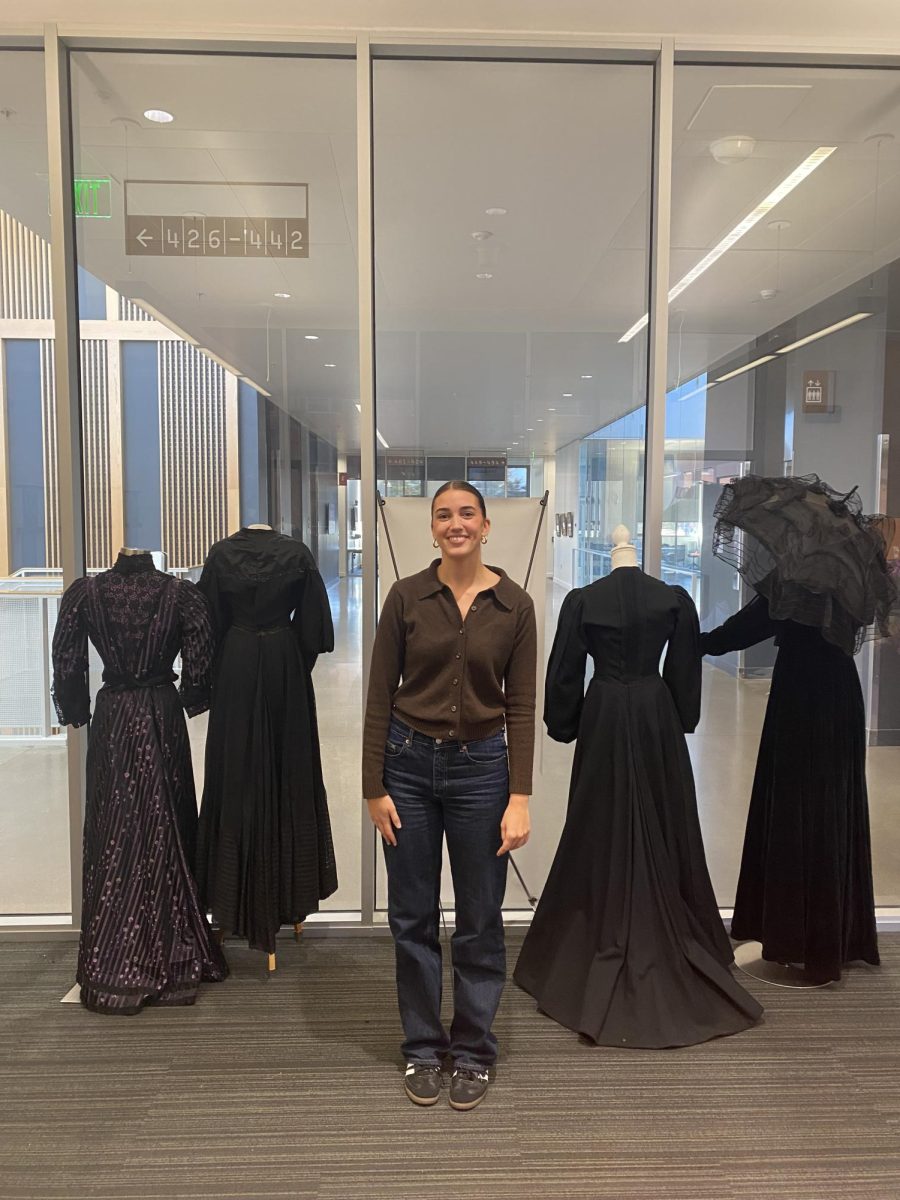
This display is a continuation of a project Koellermeier worked on for her History of Contemporary Fashion class taught by professor Jennifer Mower. Mower reached out to Koellermeier over the summer, prompting her to transform this former school assignment into a live display for Halloween. The two collaborated on the project and sought to bring these historical designs to light, setting up the display on Oct. 24.
Inspired by the late Queen Victoria’s perpetual mourning fashion after the death of her husband, Prince Albert, “Death Becomes Her” shows us the historical protocol for English and American widows in the late 19th and early 20th centuries. With dresses ranging from 1898 to 1908, this display illustrates the appropriate colors and styles worn at various stages of grief. In this time period, the physical display of mourning through fashion could last three months, three years or, in Queen Victoria’s case, forever.
These garments are genuine articles from history and were sourced from the Historical and Cultural Textile and Apparel Collection in Milam Hall, with Kollermeier having utilized the digital library resource to aid in the curation process. Modesty was expected for women in mourning, with high necklines to full ankle coverage. However, the utilization of various decorative trimmings, accessories, and corsets added personalization and fashion flare into their dress. According to Koellermeier, It was common to see garments feature “a sleeve shift which was a loose upper portion of the sleeve (that) would tighten at the elbow down to the wrist. This was used to make the waist seem smaller actually because the fabrics would cover the woman’s entire body.”
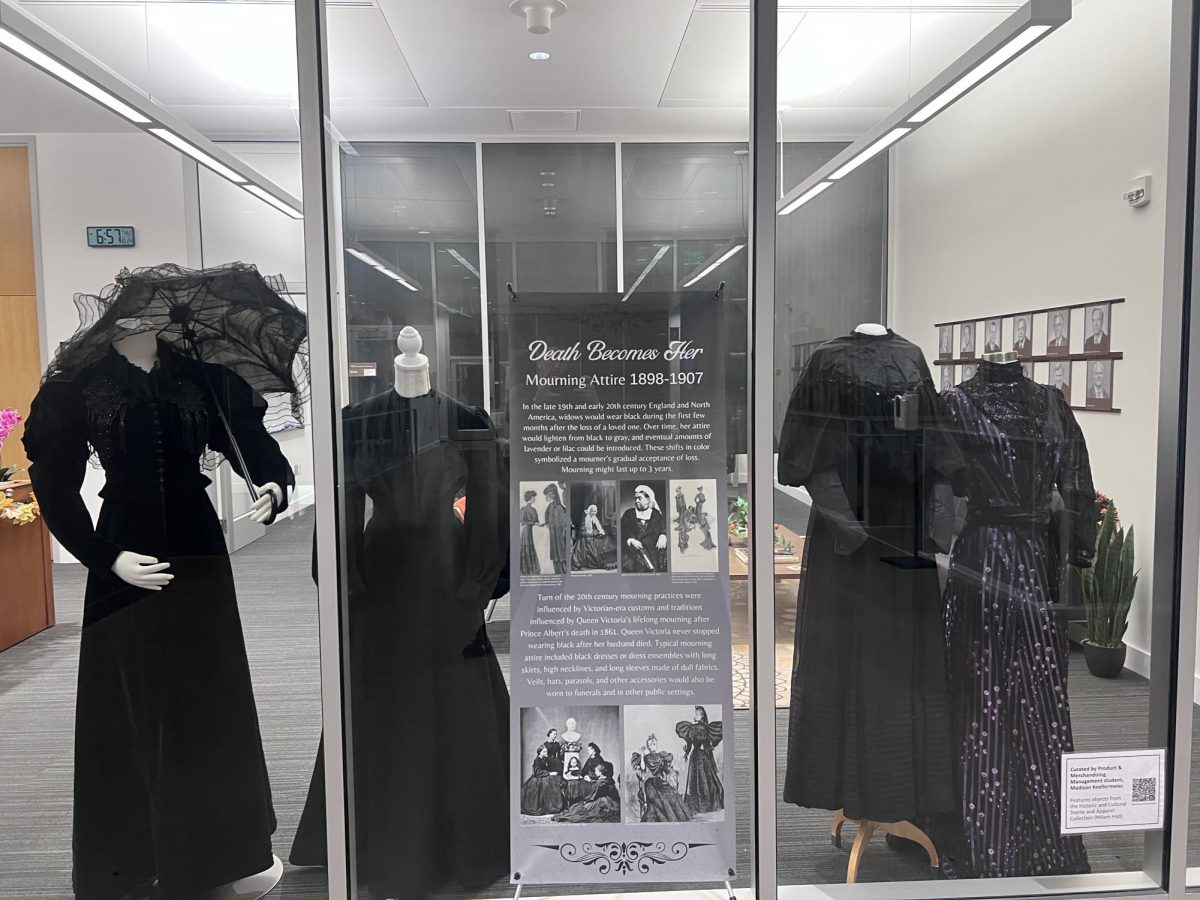
Color and fabric was utilized to mark the slow transition out of the beginning stages of mourning expression. Koellermeier explained that fabric textures from early stages showcased “mostly dull fabrics and then it would turn into other types of fabrics, like cotton, velvet, and then it would turn into more fun fabrics, like silk.” Additionally, the incorporation of color is expressed in this display, with the dress sequence highlighting the slow transition of acceptable color details that represented the widow coming out of the mourning period. When curating these pieces, Koellermeier said, “We really wanted to show the coming-out of the mourning stage, from all black to lilac.”
When talking about encouraging people to visit the display, Koellermeier noted, “It’s interesting to see clothing from back in the day, and also it’s something fun to see during Halloween time as well, … Especially if you’re interested in different fabrics and stuff as well, and how that detailing worked back in the day, this is a great way to see that.” This display is up in the window of the dean’s office in Austin Hall now through November.



